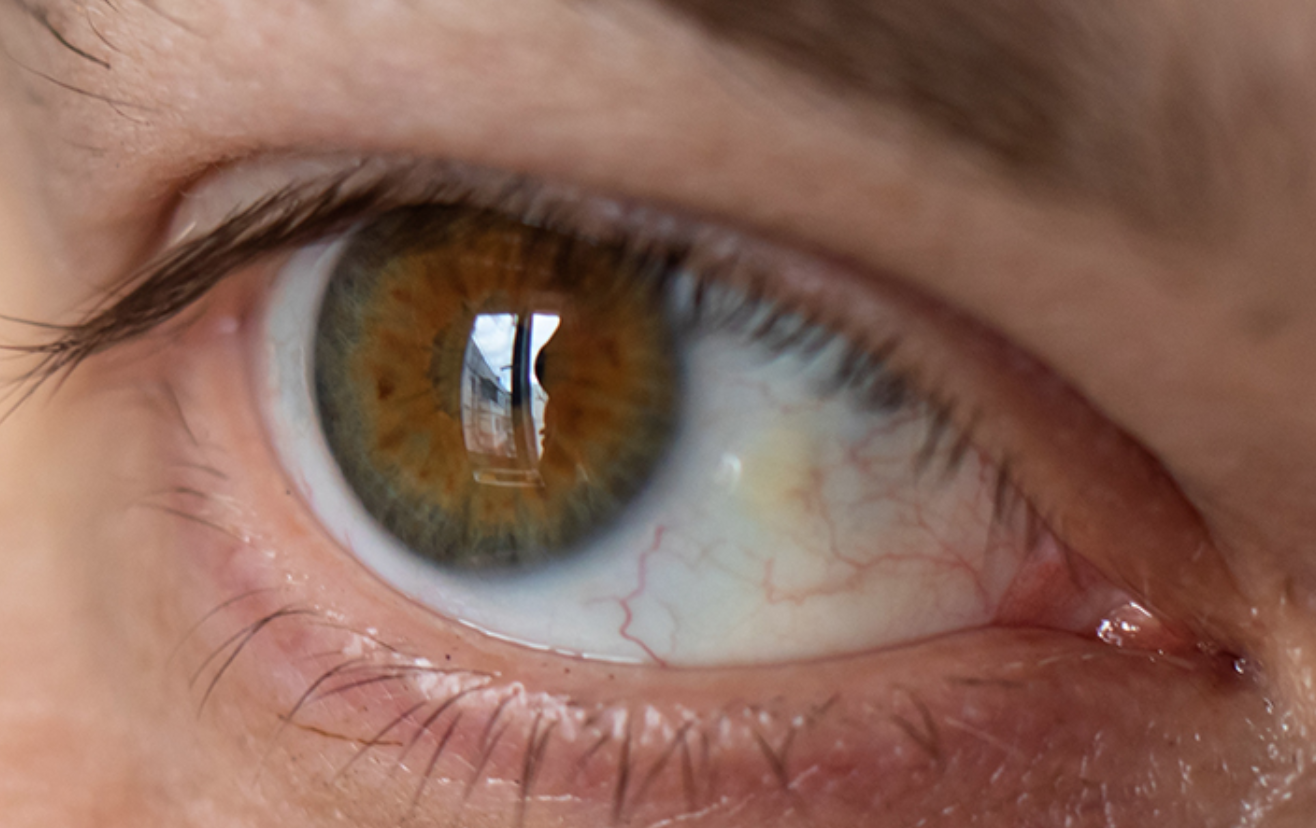The white of the eye is called the sclera. It is covered by a thin clear tissue called the conjunctiva. A pinguecula is an abnormal accumulation of cellular material and tissue in the conjunctiva that appears as a yellowish bump on the white of our eye. A pinguecula most commonly occurs in the corner of our eye closest to the nose, however, they can form on both sides.
Pinguecula are caused by dryness, irritation, and chronic UV exposure. Pinguecula are a physical alteration of the tissue, rather than a condition that comes and goes. Typically, pinguecula are harmless and don’t cause much concern, however, chronic irritation can cause them to grow larger, and in some cases even grow onto the cornea. If a pinguecula grows onto the cornea, it is known as a pterygium.
The best way to prevent a pinguecula from forming or getting worse is by avoiding the irritants above that are known to cause their formation. Wearing sunglasses with UV protection when outside is one of the easiest and best ways to protect your eyes. Similarly, good eye hygiene and regular use of lubricating drops can help keep the eyes healthy and protected.
Fortunately, pinguecula are benign growths that usually don’t result in many symptoms. Sometimes, pinguecula can grow large enough to cause eye irritation or a foreign body sensation. When lubrication drops alone are not enough, surgical intervention is an option. Occasionally, larger pinguecula can also get irritated enough to cause inflammation, a condition known as pingueculitis. Pingueculitis is usually self-limiting, but the resolution can be sped up with a short course of topical anti-inflammatory drops like prednisolone or fluorometholone.
Although pinguecula are generally considered harmless, there are many other types of conjunctival lumps and bumps that are not. If the lesion looks dark, irregularly shaped, bleeds, or involves any other part of the eye, it is likely something else that requires the attention of a medical professional. I always advise patients to identify and monitor any suspicious bumps on or around the eye. If you think you may have a pinguecula or another lesion involving the eye, talk to your doctor. See the links below for more information.
References:
https://www.aao.org/eye-health/diseases/pinguecula-pterygium
https://www.aoa.org/healthy-eyes/eye-and-vision-conditions/pinguecula?sso=y
https://www.hopkinsmedicine.org/health/conditions-and-diseases/pinguecula-and-pterygium












